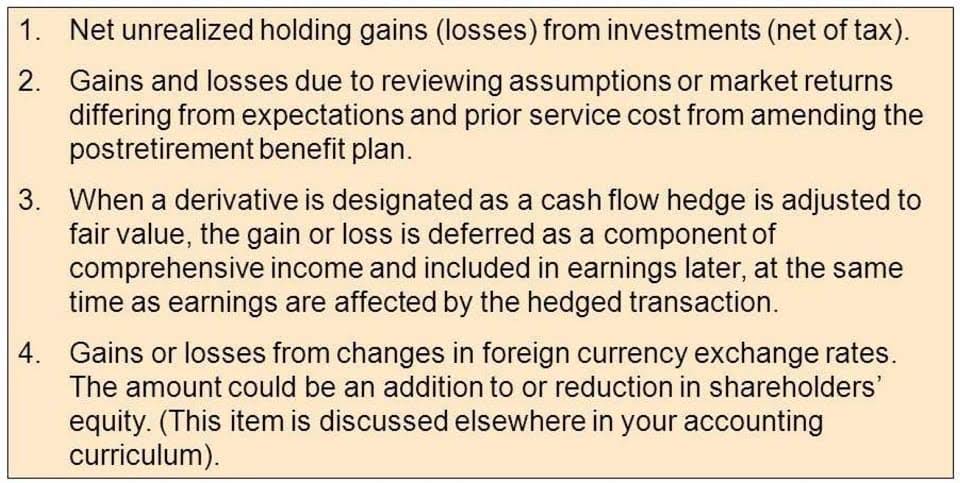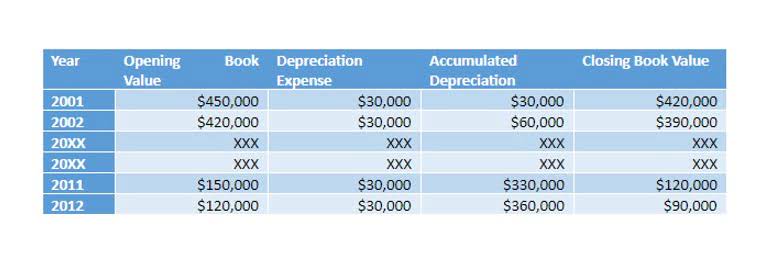Category: Bookkeeping
How to Calculate Retained Earnings: Formula & Example

Businesses use ARR to compare multiple projects to determine each endeavor’s expected rate of return or to help decide on an investment or an acquisition. RE balances are not always positive, as they can reflect a greater net loss in the current period than the RE balance at the beginning. Alternatively, a large distribution of dividends that exceeds the retained earnings balance can cause it to go negative. Any item shown on the income statement will also impact retained earnings, for example, sales, cost of goods sold and other operating expenses. Retained earnings appear on the balance sheet under shareholder’s equity. The statement of shareholders’ equity will include the changes in these earnings for a specific period.

Which of these is most important for your financial advisor to have?
Therefore, a company with a large retained earnings balance may be well-positioned to purchase new assets in the future or offer increased dividend payments to its shareholders. For investors and financial analysts, retained earnings are essential since they offer in-depth insights into a company’s long-term growth potential. A company with a high level of retained earnings indicates that it has been able to generate consistent profits, which can be used for reinvestment in the business or to fund future growth opportunities.
Significance of retained earnings in attracting venture capital
As an investor, one would like to know much more—such as the returns that the retained earnings have generated and if they were better than any alternative investments. Additionally, investors may prefer to see larger dividends rather than significant annual increases to retained earnings. Retained are part of your total assets, though—so you’ll include them alongside your other liabilities if you use the equation above. Your bookkeeper or accountant may also be https://www.facebook.com/BooksTimeInc/ able to create monthly retained earnings statements for you.
Company

With the relative infrequency of material errors, the use of this type of adjustment has been virtually eliminated. A fourth reason for appropriating RE arises when management wishes to disclose voluntary dividend restrictions that have been created to assist the accomplishment of specific organizational goals. GAAP specifically prohibits this practice and requires that any appropriations of RE appear as part of stockholders’ equity. Any probable and estimable contingencies must appear as liabilities or asset impairments rather than an appropriation of https://www.bookstime.com/ RE. This action merely results in disclosing that a portion of the stockholders’ claims will temporarily not be satisfied by a dividend. For various reasons, some firms appropriate part of their retained earnings (RE).
- There are numerous factors to consider to accurately interpret a company’s historical retained earnings.
- Ask a question about your financial situation providing as much detail as possible.
- That’s an indicator the business is focusing less on growth—because more money is going to shareholders and less is being reinvested.
- Revenue is the money generated by a company during a period but before operating expenses and overhead costs are deducted.
- In other words, it tells you what percent of your net income you’re keeping, rather than paying it out to shareholders.
- Looking closely, a steady increase in retained earnings usually means good financial management and a positive profit outlook.
- When the accounting period is finalized, the directors’ board opts to pay out $15,000 in dividends to its shareholders.
How Companies Use Retained Earnings
From there, the company’s net income—the “bottom line” of the income statement—is added ending re formula to the prior period balance. If the retained earnings balance is gradually accumulating in size, this demonstrates a track record of profitability (and a more optimistic outlook). Retained Earnings on the balance sheet measures the accumulated profits kept by a company to date since inception, rather than issued as dividends. We can find the net income for the period at the end of the company’s income statement (consolidated statements of income). Looking at retained earnings to market value lets us compare giants like Apple with others. It shows investors how much value goes back into the company instead of to shareholders.

How to calculate retained earnings: Formula & example
As companies grow, their shareholders’ equity tends to be split among more and more people or entities—from the venture capital companies that invest in them to, eventually, public stockholders. Negative retained earnings may be a reflection of a company’s financial performance. The formal structure is presented below, but that’s the gist of it. You’re just figuring out how much you’ve earned that you haven’t paid out to your shareholders as dividend payments.
Determine Net Income/Loss for Current Period
However, some companies with long-standing profitability may occasionally report negative retained earnings. This just means the company decided to pay out more than it reported in profits. Startups and smaller, growth-focused companies tend to have high retention ratios.
How to calculate the effect of a stock dividend on retained earnings
For example, businesses can use these earnings to reinvest into the company for expansion through the purchase of property, plant and equipment or to pay off its debts. Generally speaking, a company with a negative retained earnings balance would signal weakness because it indicates that the company has experienced losses in one or more previous years. However, it is more difficult to interpret a company with high retained earnings.
Let’s walk through an example of calculating Coca-Cola’s real 2022 retained earnings balance by using the figures in their actual financial statements. You can find these figures on Coca-Cola’s 10-K annual report listed on the sec.gov website. Retained earnings can be used to assess a company’s financial strength. When lenders and investors evaluate a business, they often look beyond monthly net profit figures and focus on retained earnings.
Petty Cash Management: Guidelines For Petty Cash Handling
The software simplifies the process of creating, approving, and reimbursing expenses. It also handles reconciliations efficiently and syncs seamlessly with your accounting software. This reduces the need for manual work, cuts down on errors, and eliminates common challenges.
How is a petty cash fund typically set up and maintained in an organization?
As CEO and Co-Founder, Mike leads FloQast’s corporate vision, strategy and execution. Prior to founding FloQast, he managed the accounting team at Cornerstone OnDemand, a SaaS company in Los Angeles. On the other hand, cash equivalents are assets and securities that are highly liquid, meaning that they can be easily converted into cash. Typical examples of cash equivalents would include treasury bills, money market funds, and commercial papers.
Secure a Petty Cash Box or Drawer:
Even with proper record-keeping and controls, it’s important to understand the difference between petty cash and cash on hand to avoid confusion in your financial planning. This practice maintains transparency and makes it easier to track where your money is going. In summary, providing training and promoting awareness among your employees is essential for effective petty cash management.
- Well-designed petty cash management system would usually have a sufficient amount of petty cash to sustain the projected number of activities within that account.
- By keeping a record of every petty cash transaction, you can effectively track expenses and maintain accuracy in your accounting processes.
- By providing employees with clear guidelines, organizations can minimize the risk of unauthorized or inappropriate expenditures.
- This segregation of duties helps to enhance the control environment within your organization.
Typical Challenges Associated with Petty Cash Management
- If there is a discrepancy, investigate whether transactions were missed or incorrectly recorded.
- Involving an independent party in these audits can add an extra layer of objectivity and credibility to the process.
- Analyze the average amount spent from the petty cash fund on a regular basis to determine if adjustments need to be made.
- These policies guide employees on what is considered an eligible petty cash expense and outline how to access funds.
- If there is a petty cash book (a record of all transactions), the custodian enters the amount received and updates the running balance.
- Understanding the core functions and purpose of petty cash sets the foundation for learning how to establish and manage a petty cash fund.
Implementing recommended cash handling procedures and security measures is essential for effective petty cash management. Remember, consistent adherence to these practices will contribute to a well-organized and trustworthy petty cash system, benefiting your business in the long run. Regular audits are also a crucial component of internal controls for petty cash.
June Landry, Partner, Chief Marketing Officer
- This person will handle the disbursement of funds, maintain accurate records, and ensure regular reconciliation.
- Today, petty cash remains a staple for businesses across industries, albeit supported by modern tools like digital petty cash logs and automated reconciliation systems.
- It is maintained by a petty cash custodian who oversees the disbursements and preserves the receipts for each expense.
- For example, Weel offers real-time tracking of company funds, boosts efficiency with custom workflows, and ensures world-class security through VISA, Apple Pay, and Google Pay.
- Security is a paramount concern when managing petty cash, and digital solutions offer robust features to safeguard funds.
To ensure smooth operations and maintain financial integrity, it’s crucial to establish a clear cash handling policy. While petty cash is for minor expenses, it’s wise to consider unexpected situations. Having a little extra for emergencies ensures you’re prepared for unforeseen circumstances without disrupting your regular cash flow. Petty cash is the operational pocket money for your business – a little sum of cash readily available to cover everyday expenses. It’s the go-to fund for small purchases, like buying office supplies and snacks or covering minor unexpected costs.
By establishing policies and maintaining control over your petty cash fund, you can prevent misuse or mishandling of funds while promoting accountability throughout your organization. Remember, clear guidelines provide structure and clarity in managing your petty cash effectively. The primary rule for petty cash is to maintain accurate records of all transactions and to replenish the fund regularly to its original balance.
Reconciliation in Petty Cash Accounting
A petty cash log should be maintained, recording every transaction, including the date, amount, purpose, and recipient. Regular audits and surprise checks can also be implemented as additional security measures to ensure that the amount in the fund matches the records. This proactive approach helps safeguard against mishandling or misuse of company resources. A petty cash system requires stringent security measures to protect the funds and deter theft. The cash should always be stored in a locked drawer or lockbox on company premises. Access to the petty cash should be limited to authorized personnel only, with a designated custodian responsible for managing the fund.
Request For Receipts
As a result, some critics petty cash argued that using petty cash has been a largely outdated practice that no longer adds value to the business. On top of that, other digital and contactless payment methods have the added benefit of being much more secure, traceable, and less vulnerable to fraud. This may be considered a significant priority amongst smaller firms regularly plagued with theft-related criminal activities.
- Having petty cash in hand may increase a department’s likelihood of spending the funds freely without paying careful attention to details.
- This fund allows employees to be easily and quickly reimbursed for expenditures they make on behalf of the business.
- This means they don’t have to wait for approvals or go through lengthy payment processes.
- Petty cash accounting software helps businesses manage small cash expenses for daily purchases, offering efficient transaction tracking and reconciliation with the available cash balance.
This will help you identify any discrepancies or potential issues with record-keeping. Receipts serve as concrete proof of the money spent and provide valuable information about the nature of the transaction. They should include details such as date, vendor name, description of items or services purchased, and amount paid.
Example Setup for a Small Office
Organizations should reconcile petty cash regularly, often monthly, to maintain oversight and prevent issues from escalating. Imprest Funds refers to a small reserve of money kept on hand by an organization to handle minor, everyday expenses. Unlike larger financial reserves, Imprest Funds is usually maintained in physical form, making it easily accessible for immediate use. It provides employees with the flexibility to address minor costs without disrupting the organization’s workflows.
Understanding the Debt Ratio: Definition, Calculation, and Analysis

What may be considered a good debt ratio will depend on the nature of the business and its industry. However, generally speaking, a debt ratio that is below 1.0 would be seen as relatively safe, while debt a debt ratio of 0.5 indicates ratios of 2.0 or higher would be considered risky. On the other hand, a low debt ratio implies that a company is financially stable and able to cover its debts without relying too heavily on borrowing.
Knowing these ratios is good, but how about action points to improve a company’s debt ratio? Debt ratio on its own doesn’t provide insights into a company’s operating income or its ability to service its debt. This understanding is crucial for investors and analysts to ascertain a company’s financing strategy.
Debt Ratio FAQs
Depending on averages for the industry, there could be a higher risk of investing in that company compared to another. In conclusion, among the 3 companies compared, Hertz has the lowest degree of flexibility as it has legal obligations to fulfill. Nevertheless, leverage is an important tool used by companies to grow, and many businesses find sustainable uses for debt. Therefore, companies should compare themselves to their direct competitors or industry average in order to find a comfortable debt ratio. Lenders may use this ratio to assess a company’s creditworthiness and may be hesitant to lend to companies with a high debt to asset ratio. From this, we can infer you should be vigilant while comparing debt ratios and that the same should be done for companies in the same industry and industry benchmarks.
- The debt ratio is the ratio of a company’s debts to its assets, arrived at by dividing the sum of all its liabilities by the sum of all its assets.
- On the other hand, investors rarely want to purchase the stock of a company with extremely low debt ratios.
- Lenders often have debt ratio limits and do not extend credit to over-leveraged companies.
- This suggests that the business has a significant portion of its assets financed by equity, indicating a lower level of financial risk.
- This ratio may give you an idea of how much of your income is going towards debt repayments.
The debt ratio is an important way to identify the financial stability and health of a business. If a company’s debt ratio exceeds 0.50, the company is called a leveraged company. Companies with a debt ratio of less than 0.50 are stable and have the potential for longevity. Mr. Rajesh has a bakery with total assets of 50,000$ and liabilities of 20,000$, the debt ratio is 40%, or 0.40. This debt ratio is calculated by dividing 20,000$ (total liabilities) by 50,000$ (total assets). If the debt ratio is 0.4, the company is in good shape and may be able to repay the accumulated debt.
Debt ratio limitations
Her expertise lies in marketing, economics, finance, biology, and literature. She enjoys writing in these fields to educate and share her wealth of knowledge and experience. A higher DTI ratio suggests that you’re at a higher risk of defaulting on your loan, whereas a lower DTI ratio indicates that you have a lower risk. You’ve successfully made it to the end of our informative blog series on financial ratio analysis. While carrying too much debt can be risky, it is important to recognize that not all debt is bad. In fact, many companies require a certain level of debt in order to operate efficiently.
- For investors, entities with low debt ratios are generally seen as safer investments.
- Looking at the debt ratio again, the debt ratio is calculated by dividing the total debt by capital.
- Since the interest on a debt must be paid regardless of business profitability, too much debt may compromise the entire operation if cash flow dries up.
- To use the debt ratio as a sustainability metric, think of it as a measure of a company’s long-term fiscal responsibility.
- Putting all these into consideration, a debt ratio of 27% isn’t so bad especially as the industry average for the industry that the company belongs to was about 65% in 2017.
- The second group that is interested in finding out the debt ratio of a company is investors, who want to confirm the position of the company before investing money in it.
- The debt ratio formula and calculation are used to compare the total debt of a company to its total assets.
However, it’s important for investors and financial analysts to interpret the debt ratio in the context of the overarching economic conditions and within the specific industry framework. What may be deemed as an acceptable and promising high debt ratio in one sector or economic climate, might be a warning signal in another. The debt ratio holds a vital place in financial analysis as it can depict the financial stability of a company.
Debt Ratio Formula and Calculation
In addition, the trend over time is equally as important as the actual ratio figures.
- The debt ratio focuses exclusively on the relationship between total debt and total assets.
- Comparing a company’s ratio to industry peers, historical performance, and industry averages can provide valuable insights to determine what is considered favorable within a specific sector.
- For example, if a company has $100,000 in total debt and $200,000 in total assets, the debt ratio would be 0.5, or 50%.
- A debt ratio of 30% may be too high for an industry with volatile cash flows, in which most businesses take on little debt.
- However, some industries, such as utilities or real estate, may have higher debt ratios due to the nature of their business.